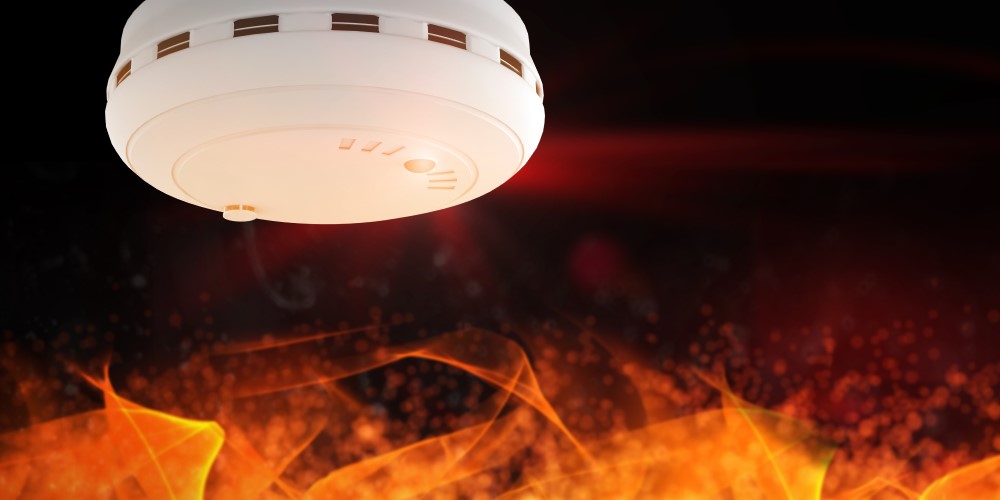The Future of Fire Detection and Alarms
Smoke detectors and alarms are migrating from just the detection of smoke, to combination detectors and multicriteria detectors.

In last month’s column, I focused on signal transmission. This month, let’s look at detectors and sensors as well as notification of an alarm to the occupants within a building.
The first detectors were for the detection of heat, and as time and technology advanced, they were also used for fixed temperature, rate-of-rise, rate anticipation and linear. These detectors are still in use today and for a number of applications remain a viable means of detection, though not for the purpose of life safety.
Through the use of thermistors and the software/firmware of the detector and the system, I do see that the Response Time Index (RTI) of a heat detector can be reduced so that the detection of a thermal event could be more quickly detected.
Fire alarm systems, however, are designed and installed in the majority of applications for life safety. The only detector that is used for this application is the smoke detector. Smoke detectors and smoke alarms are and remain as the single best method for the early detection of a fire and have saved countless lives. These devices however have one principle problem, they are a source for unwanted alarms.
Since the first generation of smoke detectors were released, there have been a number of advancements to both decrease the time of detection while at the same time decrease the activation of the detector when the products of combustion are not present. Smoke detectors and alarms are migrating from just the detection of smoke, to combination detectors and multicriteria detectors.
The future will be with multicriteria detection in which the detector will be more of a sensor, with the detection more for the products of combustion, such as carbon monoxide, carbon dioxide, sulfur dioxide, nitrogen oxides in addition to heat and particulate matter.
Sensors will also have the ability to sense or track when a room is occupied or not and have the ability to be integrated with occupant notification and evacuation. The development of more advanced algorithms and artificial intelligence, both within the sensor itself and the front end control unit will decrease the time from the beginning of an event to the notification of the event.
It is not improbable that detection technology will be able to detect an incipient fire at that stage rather than at the flaming stage. This at the same time could reduce the likelihood of an unwanted activation from occurring.
Within the next decade, video image detection (VID) will become more mainstream in which, through analytics, the image of either smoke or flame will be able to be isolated and detected from within a room or space. The VID system would also be able to detect if an individual is within the space and through the integration with the notification appliances, provide a path of exit.
In regard to the notification to the occupants, within the United States we are still primarily sounding an alarm throughout the occupancy and trusting that the occupants will heed the warning and head to the nearest exit.
Through the reduction of unwanted alarms, the human behavior regarding alarms does need to change so that when an alarm does occur, occupants are not waiting for a second indication that there is a fire, such as smoke, and will instead depart the premises without additional indicators.
If the individual is familiar with the building, they generally know the location of exits. However, if one is not familiar with the occupancy or if there may be a blockage of one of the exits, then the notification system should be able to aid the occupants with a direct and safe exit.
I see this as the future with notification within a premise, in which the fire detection system will, through sensors, know where the occupants are in relation to where the alarm is being generated from and be able to guide them away from the event to an exit. This may be through messaging via notification appliances but could also be through the interface of the detection and notification system to the smart device that the building occupants would have on them.
Occupant location is also vital information for first responders. At the present time, if there is an active fire within a structure, the first duty is to perform a primary search and then a secondary search of the building to make certain that no one is still inside.
This does take time away from suppression and does increase the risks to the first responders that are conducting the searches. Through the use of sensors and VID, the location of an individual or individuals could be detected by the system and relayed to the first responders so that they could go directly to where they are located.
If you enjoyed this article and want to receive more valuable industry content like this, click here to sign up for our FREE digital newsletters!

Security Is Our Business, Too
For professionals who recommend, buy and install all types of electronic security equipment, a free subscription to Commercial Integrator + Security Sales & Integration is like having a consultant on call. You’ll find an ideal balance of technology and business coverage, with installation tips and techniques for products and updates on how to add to your bottom line.
A FREE subscription to the top resource for security and integration industry will prove to be invaluable.








